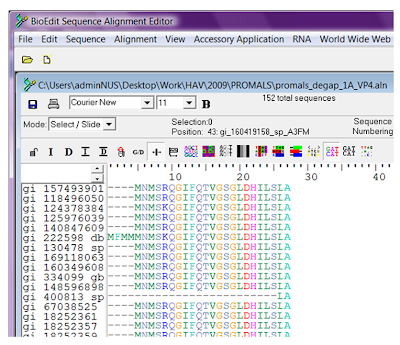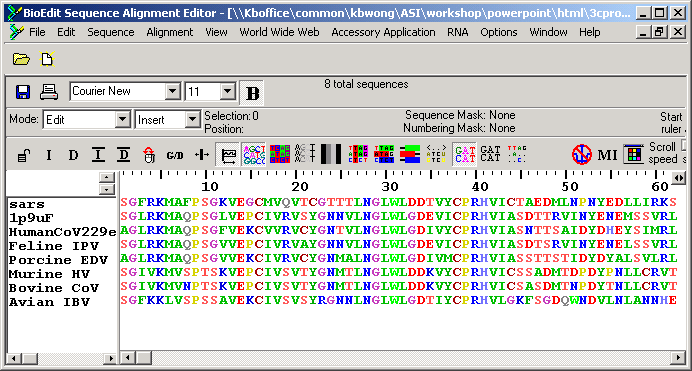

For DNA sequences the background noise will be even more dominant as a match between only four nucleotide is very likely to happen.

Window size: A residue by residue comparison (window size = 1) would undoubtedly result in a very noisy background due to a lot of similarities between the two sequences of interest. Solution: By using sliding window (size =w), cut-off (value=v) Problem: Plot becomes too noisy when we compare large and similar sequences. The resulting rectangular graphical representation is a dot-plot.

It thus represents all possible comparisons of characters in either sequences and is colour-coded with two colours indicating a match or mismatch between any two characters. The resulting rectangular graphical representation is a dot plot. Whenever symbols in the observing windows match, a bright dot is placed in a grid at the respective indices. By overlaying a frame containing a window that allows viewing exactly one symbol of each strip at a time symbols are compared in pairs. Every symbol of the sequence is written consecutively into one chequer, with its index number next to it. The principle used to generate the dot plot is: The top X and the left y axes of a rectangular array are used to represent the two sequences to be compared.Ī dot is plotted at every co-ordinate where there is similarity between the bases.Īs an initial example for dot plots one can imagine the same sequence written onto two strips of chequered paper. ĭot plot are two dimensional graphs, showing a comarision of two sequences. In bioinformatics a dot plot is a graphical method that allows the comparison of two biological sequences and identify regions of close similarity between them.Ī dot plot is a simple, yet intuitive way of comparing two sequences, either DNA or protein, and is probably the oldest way of comparing two sequences.


 0 kommentar(er)
0 kommentar(er)
